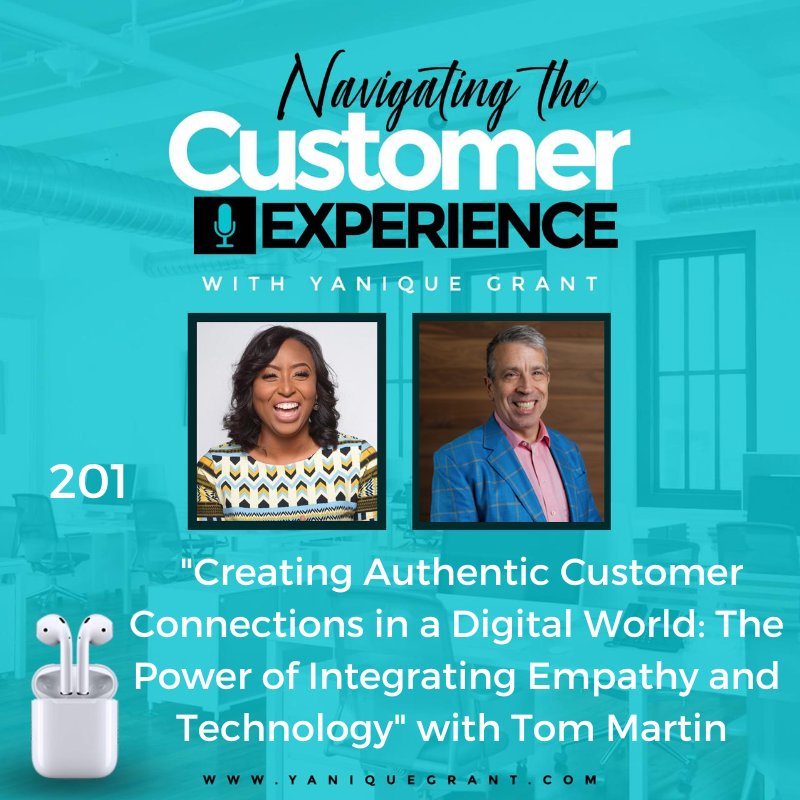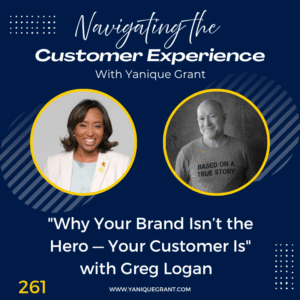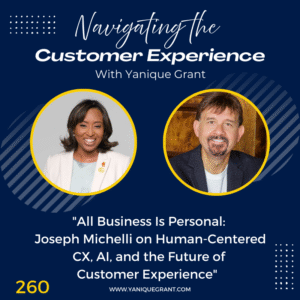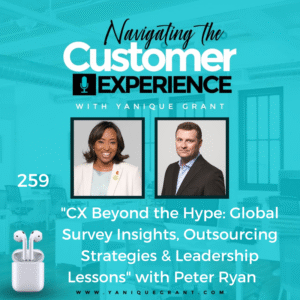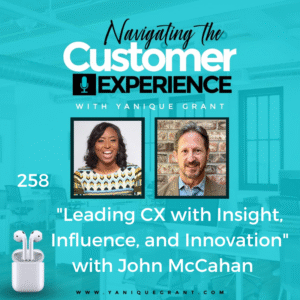Tom Martin is the CEO at Glance, a CX and contact center strategist, product lifecycle expert, and partnership builder. Tom has led Glance through a successful “pivot,” transitioning from a small business screen share tool to a provider of omnichannel visual engagement solutions for some of the largest enterprises in the world.
Since that pivot, Glance has experienced multiple years of 70% year on year growth. Prior to joining Glance in 2013, Tom spent over a decade at Verizon building and managing strategic partnerships. Outside of the office, Tom is an avid backcountry skier, mountaineer and competitive cyclist.
Questions
• We always like to give our guests an opportunity to share in their own words, a little bit about their journey, how you got to where you are today.
• Now, could you tell our audience a little bit about Glance and what it is that your company does?
• Can you share with our listeners a little bit about how it is that you can still integrate personal experiences or personal connection with emotion even though we have so much of our connectivity being done in a digital space.
• What is your view on empathy? And do you believe everyone has the ability to exercise it? And if not, what are some tools that you believe can help to strengthen that particular competence in a team member?
• Can you also share with us what’s the one online resource, tool, website or app that you absolutely can’t live without in your business?
• Could you also share with us maybe one or two books that have had a great impact on you, it could be a book that you read a very long time ago, or even one that you’ve read recently.
• Could you also share with our listeners, what’s the one thing that’s going on in your life right now that you’re really excited about? Either something you’re working on to develop yourself or your people.
• Where can listeners find you online?
• Now, before we wrap our episodes up, we always like to ask our guests, do you have a quote or a saying that during times of adversity or challenge, you’ll tend to revert to this quote if for any reason you got derailed or demotivated, this quote will help to get you back on track. Do you have one of those?
Highlights
Tom’s Journey
Tom shared that he’s always been fascinated with people which drew him down the path of really understanding what people like, how people buy, he cuts deep into sales and marketing early in his day. And no matter what he was doing, he was always interested to understand how to connect with other people. And the part of like connecting with other people, as you realize that as we have moved from business where we were always together, like you walked into a store you connected with people, you learned a lot of information when someone walks through the door. If you’re in a clothing store, you could size them up and be like that person’s this size jacket. And you could also recognize all the other cues.
It could be like Valentine’s day or the day before, and a gentleman walking in and he’s in the women’s section. There’s all that context that you get. So, you understand, like the challenges that businesses today have when you start to move, sometimes completely into the digital realm.
And so, it’s sort of been an area of focus of his, throughout his career, just understanding people. And in today’s landscape of customer experiences, where the battleground is no longer a product, it’s really the experience that people have.
About Glance and What Your Company Does?
Tom shared that they are a in-brand collaboration platform that brings real human beings into a digital space, to be able to provide that personal connection at just the right moment. And that translates into thinking about any type of a journey that a customer is doing, where it could be better served by bringing a human being in, so many people have become more digital native and of course, the familiarity of digital tools has skyrocketed with the pandemic because people, that was the only modality that they had.
But now you realize that, instead of thinking about how do I actually do something, it now comes down to what advice do I need to complete something. And can I reach out to get advice, guidance from someone who can help me understand the inner workings of something, demystified fees, whatever it might be. And that’s what they focused on doing is really bringing the digital and the human elements together.
Integrating Personal Experiences or Personal Connection with Emotion Even Though Our Connectivity is Being Done in a Digital Space
Me: So, that’s what Glance is all about. Now, at the beginning when you were explaining about your personal journey, how you got to where you are today, you mentioned something that piqued my interest, which was the connection that you make with someone, really getting to know that individual and connecting on a personal level.
Now, a big part of customer experience, I believe is an emotional connection that you have with someone and I do believe people buy from organizations that they like and love, and there’s some emotion that’s there that’s driving them to want to do business with that organization.
Can you share with our listeners a little bit about how it is that you can still integrate personal experiences or personal connection with emotion even though we have so much of our connectivity being done in a digital space?
Tom shared that the things that we talk about today and also where things are headed, that are going to be supported by technology is recognizing that today….customers are forced to really be in the driver’s seat to go down in many of the different channels.
And many times, if you ask someone, have you had a good experience with a chatbot?
If it’s outside of something that’s very simple, like, what are your hours of operation, oftentimes leads them to switching channels to get somewhere else. And when you think about the emotional component and realizing that if we’re able to meet the customer where they are versus forcing the customer to go through many different channels to find out that they can’t get what they need done, either abandoned, or they come up with another channel, like making a phone call that maybe goes into a centre, or into a store.
And the part about like emotion is realizing that, what if we want to insert the human being into the journey at a certain spot, or maybe in a couple different spots, where you can provide that level of connection or empathy really demonstrating genuine care and understanding towards the customers’ needs and concerns.
And the part of what we’ve experienced over the past number of years is this idea of we need to deflect away from those channels because they’re inefficient. But we also recognise that while digital is becoming better at getting information, at helping people through certain workflows, there are moments in a journey where, “If I could just talk with you to be able to understand something to help me make a decision.”
Because oftentimes, you think about what a bot can do, it’s going to be doing things based on information it knows. And many people don’t necessarily want to share everything about their personal life, they’re going to hold it guarded until they actually speak with someone to say, “Hey, this is what my situation is, is this going to meet my needs? Is this going to help me live my best life? Should I go and get this mortgage.”
And so, emotion has a bunch of different components and he thinks of how Forrester thinks about these things, empathy being the most important part, but also having bankers or agents or specialists, be able to not just combine the empathy, but also be given the empowerment to actually solve a problem.
And today, there’s a lot of focus on things like personalization, really tailoring interactions to meet a specific customer’s preferences and expectations. And also realizing that people take the shortest path, like water, they take the path of least resistance.
And so, finding ways that we can delight a customer, how we can simplify the process and oftentimes, once you get so far, being able to connect with someone, you realize that wow, I am interacting with a real business, with real people, and he likes to say that people want to do business with people that they know, like, and trust, it’s an important aspect.
And when he’s connecting with you, and he goes, “Gosh, I can have a personal connection with you, I can now have a better relationship with the business because you’re now representing the business, you might be better representing the product or service that I’m buying.” And so, it becomes multi-dimensional when you’re able to connect with a human being not just personal one on one, but it just changes your view of the business.
Me: Agreed. And so, the human connection is even more important now I believe as you were mentioning just now, different interactions that customers have with a business, because then they feel more connected to that business, they feel like somebody’s actually listening to them and they’re being heard.
Tom agreed and stated that he thinks one of the challenges that businesses today are facing is really going forward is how to infuse that human element into the digital experience and realizing that it’s not a oh, digital failed, now we’re going to go to a human being. It’s how do we bring these things together so that while we’re in that immersive experience, while we’re in the digital channel, you suddenly have multiple modalities.
And as we start to think about data, and when businesses start to go, oh, yeah, we have a lot of data, but then it becomes, wow, the data lives in so many different places, how do we organize it? And how do we actually take information and insights that suddenly become actionable?
For many businesses, they realise, “Wow, we have some work to do, there’s some homework, there some clean-up, there’s things that we need to do.” But when you start to think about understanding what your customers are doing, and you can design an action, a journey, an experience for a customer that’s informed by data that suddenly says, “You know what, we’re going to create that the high speed lane on the highway, we’re going to clear all the clutter.”
Because many times when you interface with a business, it’s almost like a labyrinth, someone designed these things, you have to go left or right, straight, backwards, it feels like and you realize that they were designed for a variety of different things that require clicks and navigating through different things. But what if that data and some of the design informs a better journey that streamline saves you time, that gets you just what you need, and brings the human being into it? He thinks that’s really the future of where we’re headed, there’s a lot of work to be done to get there.
What is Empathy? And Tools That Can Help Strengthen Empathy in a Team Member
Me: Agreed. So, you also mentioned in your explanation of personal connection, empathy and it’s definitely something I believe that is critical for customer experience, especially for organizations, you have some industries that need empathy more than others, I do believe every industry needs it. But I think some needed even more, for example, like the healthcare industry, but what I wanted was your insight as a CEO, you sit at the top, I’m sure you integrate with your team members at all different levels, but it’s important to kind of hear from the leader of an organization, what is your view on empathy? And do you believe everyone has the ability to exercise it? And if not, what are some tools that you believe can help to strengthen that particular competence in a team member?
Tom stated that it’s a really important piece. And he does think empathy is something that you can lead with, it’s almost similar to like a value that they have there in the company, which is like assuming positive intent. But having empathy, which is, can you walk a few steps in the other person’s shoes, the customer’s shoes or a colleague, and he thinks there are people that are higher on the they’ll call it the EA spectrum that they just have a higher sort of emotional quotient, EQ is the phrase.
And he thinks the part that we’re starting to see is, what if there are things that can fall into the category of having information that based on the conversation that is being had, you can have tips and tricks, you can have information that’s being done. And this is where technology, imagine natural language translation is working to listen to the conversation and is helping coach the specialist to have a better conversation. It can listen for tone, it’s doing the translation on the actual words, and can bring information in to the conversation to recommend to the specialist how to have a better conversation.
And part of empathy is demonstrating that genuine care, but also, it falls short, if you’re not empowering the people that are delivering the empathy. Because empathy without empowerment can work in the opposite direction, it can actually be kind of like a falsehood. You say you’re sorry, but you’re not willing to actually do anything to help me out and so you really need to couple those things together, and be able to solve problems, to be able to get the customer where they need to go as efficiently as possible.
App, Website or Tool that Tom Absolutely Can’t Live Without in His Business
When asked about online resource that he can’t live without in his business, Tom shared that the thing that he finds with modern day smartphones, is probably he can’t live without his smartphone more than anything because he suddenly have access to all the different systems personally at his fingertips. His business phone can ring, he has access into things that need to be HR or finance for approvals. But he feels like we’re now in this world where mobility has created this opportunity to be connected wherever you need to be connected. He knows that’s a bit of an overarching statement, but he feels like the mobile device has really become a game changer for so many people in business because it gives you access and information at your fingertips.
Me: All right, so your mobile phone is your tool. All right, love it.
Books that Have Had the Biggest Impact on Tom
When asked about books that have a great impact, Tom shared that one that he read a long time ago that he still thinks today is amazing. An author who we see in the New Yorker, Atul Gawande, he wrote a book calledThe Checklist Manifesto: How to Get Things Right. And it really went through a process of just understanding what are the things that need to be done, and he speaks from the voice of a surgeon and thinking about performing surgery on someone, and to have the right outcomes, there’s a checklist, and there’s so many things within a business that can be assisted and aided and improved by doing things around a checklist.
Another book that he just finished that he really liked is 10x Is Easier Than 2x: How World-Class Entrepreneurs Achieve More by Doing Less by Dan Sullivan, and the concept of that is pretty simple, in that 2x is very easy to see, you and I can say, “Oh gosh, we need to do 2x more.” It’s just a matter of like working harder, a few things that you streamline, but it’s something that you can see how to achieve 2x. To achieve 10x, oftentimes, you have to say, “Gosh, we’re going to have to do a lot of things differently. And first and foremost, we’re going to have to stop doing a lot of things.”
Because to 10x isn’t to say we’re going to 10x everything, it’s one of the most important things we’re going to 10x and it means that all the other things don’t matter as much. In fact, some of those things can be eliminated, stopped, it can be deferred, you can hand it off to someone else to do but it’s really about how to think about 10xing anything, your personal life, your business.
And if you think about the 80/20 principle, it can be applied in so many different ways. You really think about saying, “Gosh, to 10x, I’ve got to put 100% of my energy on the 20% of my life or my business, which means I’ve got to figure out how to deal with removing that 80% that gives me that 10x leap.”
And then the last one, this is a fun one. He bought this for his daughters, Kevin Kelly, one of the founders of Wired Magazine, it came out in the beginning of May. Excellent Advice for Living: Wisdom I Wish I’d Known Earlier. He loves this book, it’s something that you can open up every day and get a little seed that can grow an idea in your head, it’s a fun little book to have on the side of his desk.
What Tom is Really Excited About Now!
When asked about something that he’s excited about, Tom shared that probably the thing that’s the most exciting is something that, you think about the parts of any type of business, they’ve spent so much time really thinking about how do they build great experiences, but what people want to know more than anything else, is when and where should we have those great experiences. And the part of that is to understand where people need help. And there’s a piece of this, which is realizing that oftentimes people and human beings want to be able to do things and they don’t necessarily rely on or can understand all the information, all the cues.
And so, if they as a company can figure out how to help businesses know when and where to have experiences that can transform how they compete, and how they deliver an exceptional experience that really puts them at the forefront of where they’re going as a business.
And in doing that, a lot of this work that they’re doing is really informed by taking a more data centric approach. And so, they’re spending a fair amount of time really rethinking how we look at things. They’ve always looked at them through a few sets of lenses and now they’re really taking a step back and saying, “You know what, we’re going to look at the same thing. But we’re going to look at it through a different set of lenses to really rethink how we approach those things.”
Because oftentimes, inexperience happens because a lot of other things have informed that experience as to like when and where it happens, didn’t just happen. It happened because of a lot of other things. And if they can understand what the best things are, then they can inform more frequently and consistently how to have them to deliver the right outcomes.
Where Can We Find Peter Online
LinkedIn – Thos Martin
Quote or Saying that During Times of Adversity Tom Uses
When asked about quote that he tends to revert to, Tom shared that there’s a quote from Scott Peck. And he’s also thinking about one other one, but the one from Scott Peck is pretty simple, and it rings true. But when you talk about adversity, the quote is, “Life is difficult. This is a great truth, one of the greatest truths. And it’s a great truth because once we truly see this truth, we transcend it. Once we truly know that life is difficult, once we truly understand it and accept it, then it no longer becomes difficult.”
And so, as you realize that there’s another part of this about optimism, optimists view challenges and hardship as temporary things that can be overcome. And so, he’s a big believer in optimism because to get anywhere, you must first imagine it, you must first dream it and then you can work towards that dream. And then that dream can become a reality. And it doesn’t mean that there aren’t going to be challenges or pitfalls along the way, but you recognize that if you believe that those things are only temporary, you can continue to thrive.
So, we want to thank you so much, Tom, for taking time out of your very busy schedule and coming on this podcast, sharing all of this great information, what your company does Glance, your views as it relates to creating that personal connection, ensuring that the digital is interceding in a very great way with the human connection, because both need to work together in order to deliver that fantastic, exceptional experience that we want our customers to have. And of course, to be very intentional about designing that experience in a way that our customers actually value the efforts and the experience that we’ve created for them.
Please connect with us on Twitter @navigatingcx and also join our Private Facebook Community – Navigating the Customer Experience and listen to our FB Lives weekly with a new guest
Links
• The Checklist Manifesto: How to Get Things Right by Atul Gawande
• 10x Is Easier Than 2x: How World-Class Entrepreneurs Achieve More by Doing Less by Dan Sullivan
• Excellent Advice for Living: Wisdon I Wish I’d Known Earlier by Kevin Kelly
The ABC’s of a Fantastic Customer Experience
Grab the Freebie on Our Website – TOP 10 Online Business Resources for Small Business Owners
Do you want to pivot your online customer experience and build loyalty – get a copy of “The ABC’s of a Fantastic Customer Experience.”
The ABC’s of a Fantastic Customer Experience provides 26 easy to follow steps and techniques that helps your business to achieve success and build brand loyalty.
This Guide to Limitless, Happy and Loyal Customers will help you to strengthen your service delivery, enhance your knowledge and appreciation of the customer experience and provide tips and practical strategies that you can start implementing immediately!
This book will develop your customer service skills and sharpen your attention to detail when serving others.
Master your customer experience and develop those knock your socks off techniques that will lead to lifetime customers. Your customers will only want to work with your business and it will be your brand differentiator. It will lead to recruiters to seek you out by providing practical examples on how to deliver a winning customer service experience!

